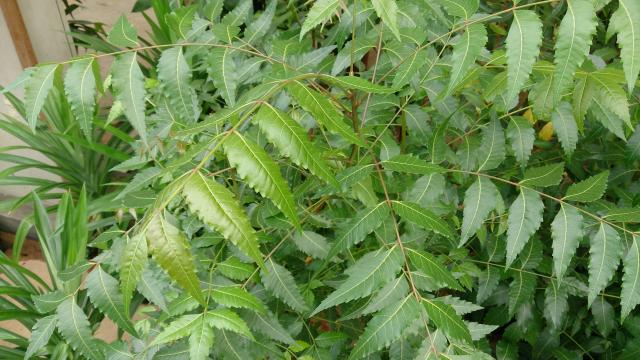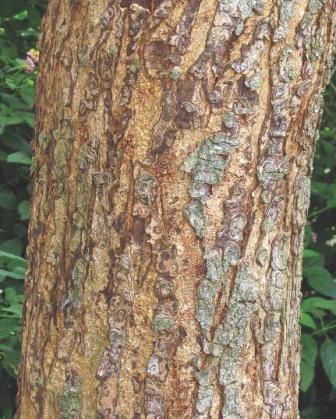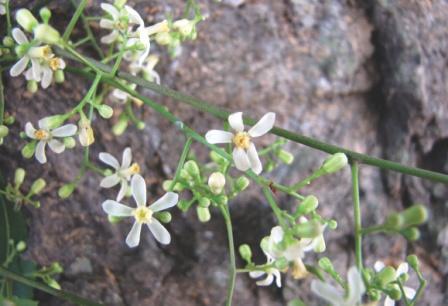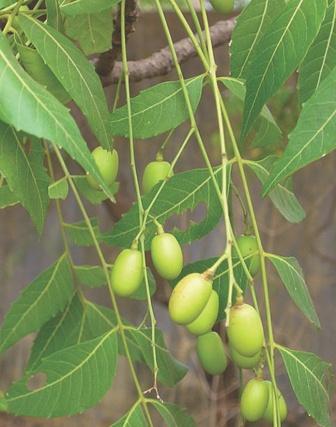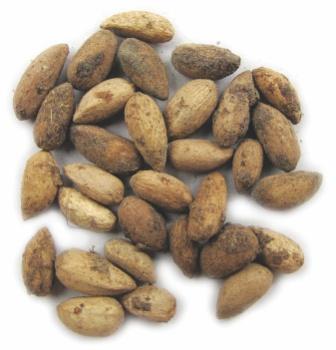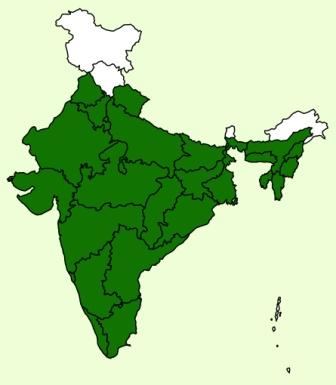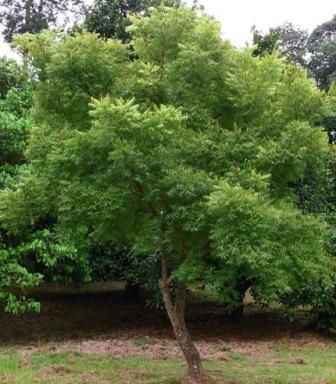Natural Regeneration :
- Though self sown seeds and through seeds from bird’s droppings Neem reproduce naturally.
- It establishes well in thorny bushes, along field bunds, wire fence "telegraph wires.
- It requires protection from grazing during early stages.
- Natural regeneration from coppice and root suckers' is also common.
Artificial Regeneration :
- Artificial regeneration could be achieved though direct sowing or out planting nursery raised seedling.
Seed collection and Storage :
- Neem seeds are collected from June to August.
- Fresh Fruits on collection should be depulped and shade dried.
- Seed weight is 3300-500/kg.
- Seed has less viability.
Seed Treatment :
- Seeds do not require any special pretreatment
Nursery Technique :
- Seeds of neem can be directly dibbled into polybags of size 20 x 10 cm or 20 x 15 cm with soil, sand and FYM in the ratio of 1:1:1 or 2:1:1.
- Soil with high clay content should be avoided.
- Fresh seeds should be graded and large size seeds are sown in polybags at the rate of two seeds per bag.
- After germination leaving the healthy one the other one is removed.
- Excess healthy seedlings can be used for pricking in containers where both the seeds have to germinate.
Plantation technique :
- One year old seedlings preferred for planting.
- Planting should be done in July-August during rainy period.
- Winter is unsuitable
Direct seeding:
- This is adopted for raising plantation for fuel wood and for the reclamation of wastelands.
- This could be done through (i) dibbling in bushes, (ii) broadcasting, (ii) sow lines, (iv) sowing on mounds or ridges, (v) sowing in trenches.
Polybags planting:
- In dry localities pits of 45 cm3 and in moist locality pits of 30 cm3 are dug for planting.
- Seedling of 6 -12 month old are out planted into the above pits during the rainy season.
- Pits can be filled with native soil along with 5 kg FYM and 25 to 50 g of DAP at planting for establishment and growth.
- Application of Bursbon in the planting pits will ward of any insect or termite attack during the period of drought.
- The spacing normally applied for Neem is 5 x 5 m or 10 x 10 m.
- Wider spacing is recommended for agro forestry practices.
Care & Disease Control :
Maintenance and after Care :
- In dry localities watering and weeding are very essential during the first two years for proper establishment and growth.
Watering:
- Pot watering once in 10 days will help the tree to tide away the drought period.
- In saline soils watering during summer and periods of drought is necessary.
- Mulching around the tree basins with pebbles or available mulch in that area will help in conserving moisture.
Tending :
- Young seedlings should be free from weeds for early establishment and growth.
- Weeding helps to conserve moisture and nutrients in the soil for the tree to take up for its growth.
- Drawing of tractor drawn tillers in between trees will help to control weeds and conserve moisture.
- Weedings also help in loosening the soil for better aeration and root growth.
- In the naturally raised plantation thinning has to be done at the end of first year to space the seedling apart for initial growth and established.
- At the end of 2 - 3 year the trees are spaced at 3x3m or 5x5m depending on the locality.
- In the artificially raised plantation at the end of 5th year selective thinning can be taken up to cull out inferior trees and space the good trees at 10 x 10m spacing.
Irrigation :
- Plantation in dry areas require irrigation upto 5-7 years.
- Pot watering once in 10 days will help the tree to tide away the drought period.
- Mulching around the tree basins with pebbles or available mulch in that area will help in conserving moisture.
Recommended Harvest :
- The rotation age for timber is 35 - 40 years and for fuel wood is about 8 years.
Yield :
- Neem is grown for its seeds and timber.
- The tree starts fruits from the 4-5th year and steady yield from the 10th year.
- Each tree at this age can yield 20-25 kg of fruits/ tree.
- The ratio of seed to pulp is about 1:2.
- The timber yield is about 108 -137 m3/ha.
Agro Forestory :
- A. indica with pearl millet, Pennisetum glaucum, has given good results in India.
Major uses :
- Neem has multiple uses.
- The wood is used as timber for construction, furniture, carts, axles, yokes, boats, .etc. and also as a fuel wood.
- Neem leaves are good fodder for sheep and camels with a crude protein of 12 -18%.
- Neem seed yields 20 - 30% oil content used in pharmaceuticals preparation.
- Neem oil yields azadirachtin which is used as insect repellent.
- Neem bark yield 12 -14% tannin.
- Neem cake is an excellent organic fertilizer.
Market details :
- Approximately Rs.4200 - Rs.4500/ton*
*Subject to change according to market demands


